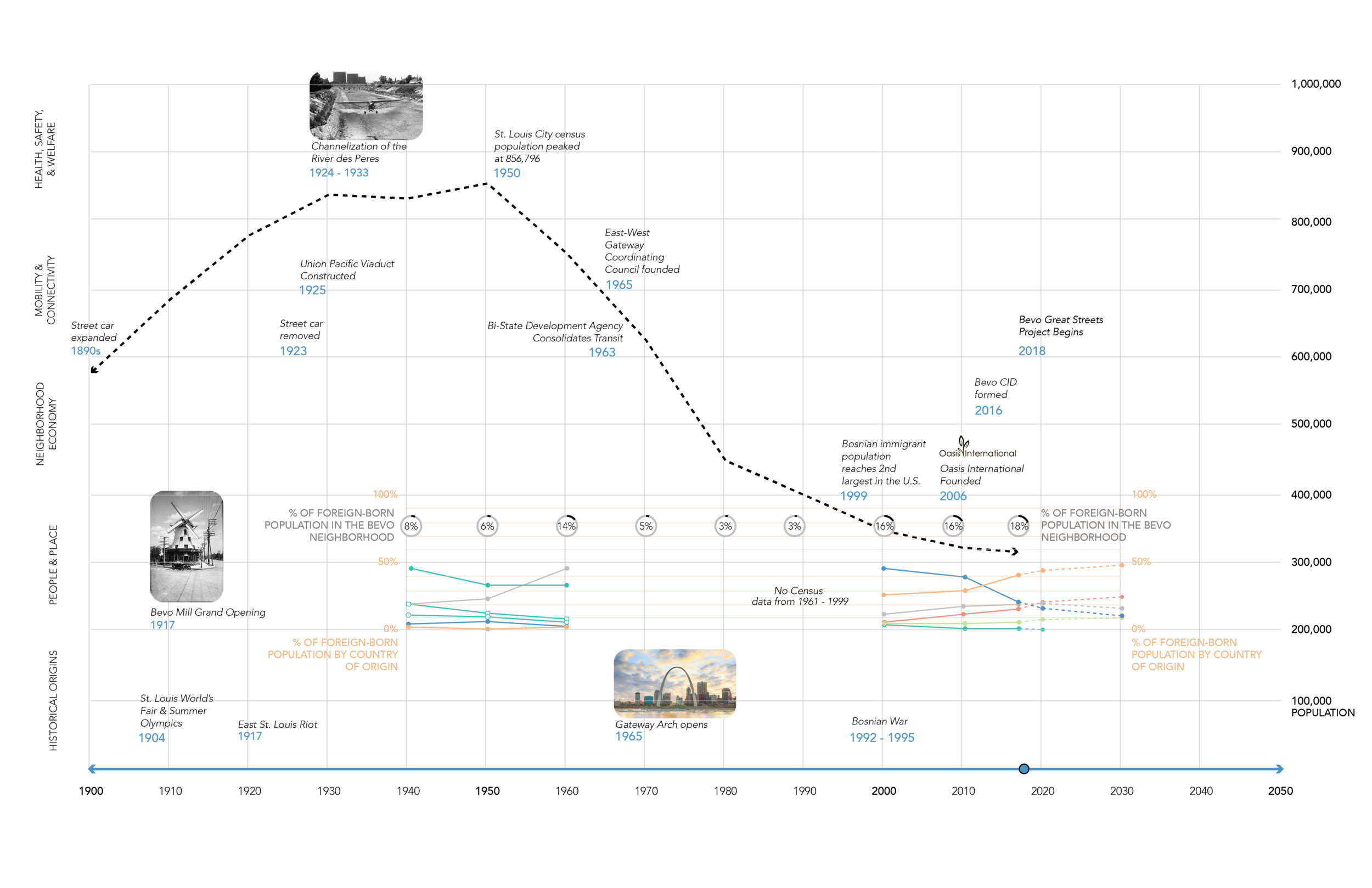
BEVO Great Streets
TLC Placemaking & Economic Development
Farr Associates led a multi-disciplinary team through the development of a complete streets plan for a section of Gravois Avenue on the south side of St. Louis. The primary neighborhood, Bevo Mill, is a passionate and involved community focused on reducing traffic speeds, increasing pedestrian movement, and increasing safety.
As part of the Great Streets Program initiated by East West Gateway, the project focuses on a mile-and-half stretch of Gravois, involving streetscape design, traffic conditions, store vacancies, business development, placemaking, and community cohesion. To produce solutions that are longlasting and community-supported, our team is looking at roadway treatments to slow traffic speed, strategies to treat vacant storefronts, and methods that will convert the road into a walkable and pleasant place.
Our robust community engagement consisted of a total of six community workshops, six stakeholder meetings, a four-day charrette, and a tactical event at the conclusion of the project.
This work included streetscape design, gateway art elements, traffic conditions, retail vacancies, business development, placemaking, and community cohesion. Solutions included detailed yet long-term strategies to align funding sources with permanent infrastructure improvements, as well as tactical improvements to start to show results as soon as possible. A major win of the project was the signing of a Memorandum of Understanding between local partners to pursue self-governance and implementation of the plan.
Client: East West Gateway Council of Governments + City of St. Louis
Location: St. Louis, MO
Role: Master Planning, Charrettes, Tactical Interventions
Project Area: 1.5 miles
Completion: 2019
-
Development Strategies: Market Analysis
CBB: Transportation Consultant
Shockey Consulting: Community Engagement
DTLS: Landscape Architect
EcoDistricts







